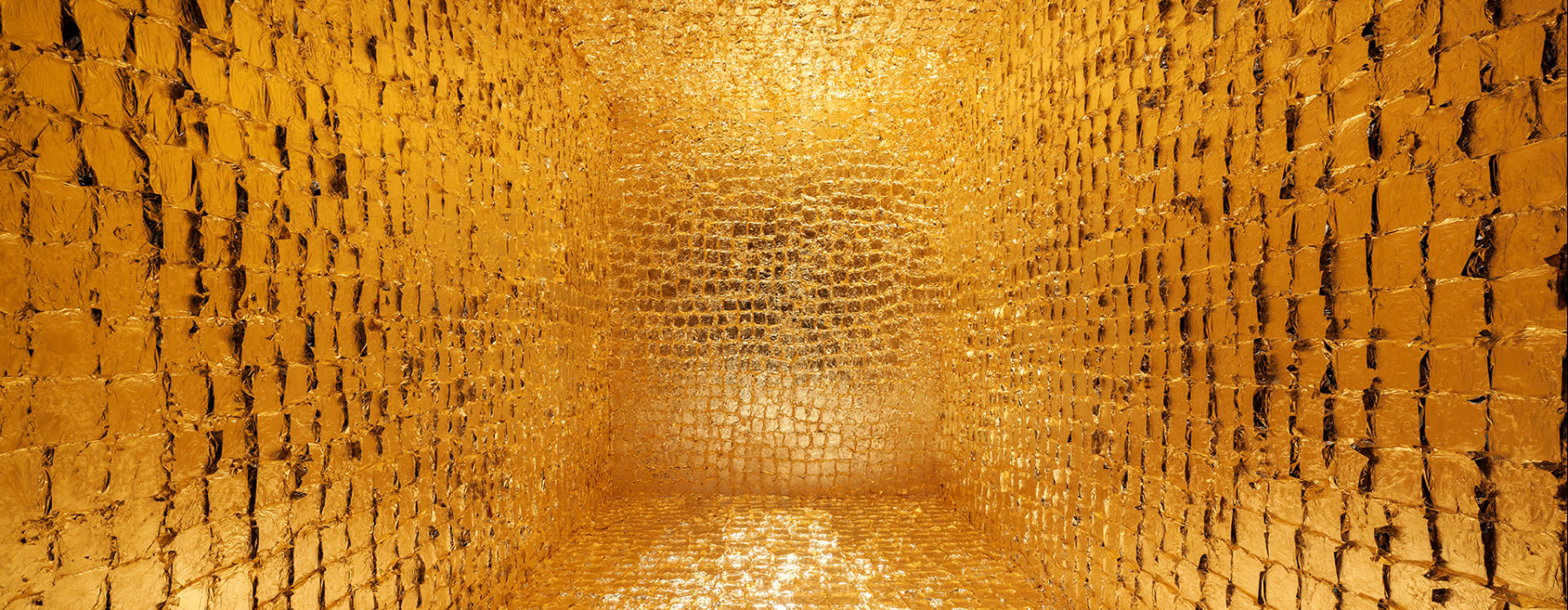
1. Cloth printed with Adinkra motifs
Replica; cotton; Asante; Ghana, before 2000; commissioned for TM Junior; TM-6095-29
Gold and yellow are often used in kente fabrics. They symbolise the power of the king and his connection with God.
2. Sandals, ahenema, for an Asante king
Replica; leather, plastic; Asante; Ghana, before 2000; commissioned for TM Junior; TM-6095-25a, b
An Asante king’s feet may never touch the ground, so he wears sandals decorated with gold. When he walks in a procession with his entourage, there is always a sandal carrier in attendance, in case one of the king’s sandals breaks.
3. King’s hat, ohene ekye
Made by Kings & Queens; replica; gold paper, wood, velvet; Asante; Ghana; before 2000; commissioned for TM Junior; TM-6095-19
This headdress is part of the king’s ceremonial dress. The elephant symbolises the power of the king over others, and the protection he offers his subjects.
4. Queen’s crown, ohemaa abotiri
Made by Kings & Queens; replica; gold paper, wood, velvet; Asante; Ghana, before 2000; commissioned for TM Junior; TM-6095-26
The rectangular shapes symbolise male power, the stars represent loyalty.
5. Court crier’s cap with Sankofa bird, adomasa
Made by Kings & Queens; replica; gold paper, wood, fur; Asante; Ghana; before 2000; commissioned for TM Junior; TM-6095-17
These caps are worn by ‘court criers’, or aseniefuo, at the court of an Asante king. In the past, people with a disability would often be trained as court criers. It is their job to maintain silence and order at the court when the king or his official spokesman is speaking, by shouting 'Tie tie!', 'Listen!'
6. Head of state’s headdress, kuluk
Gold; Java, Indonesia; before 1986; gift of Colonial Institute; TM-124-1
This ceremonial headdress, known as a kuluk, comes from the Javanese sultan’s family of Demak. Demak was the first Muslim kingdom in Java. Instead of the crowns with images of animals that had been worn in the past, the sultans wore this headdress, which was decorated with floral motifs, in accordance with their faith. Images of humans and animals are forbidden in Islam.
7. Wrap, kain panjang prada
Cotton, gold leaf; Java, Indonesia; 1850; bequest of M. Enschedé; TM-903-15
The application of gold dust is done mainly on the Pasisir, the north coast of Java. This cloth is divided into the kepala, the 'head' and the badan, the 'body'. The kepala has the traditional tumpals, triangular motifs. The images on the badan tell the love story of the Javanese Prince Panji and his bride Candra Kirana.
8. Pencil skirt with wayang figures
Cotton, gold leaf; Java, Indonesia; 1850; bequest of M. Enschedé; TM-903-16
Two large wayang figures are depicted in gold leaf on this pencil skirt. The text beneath the figures identifies one of them as Prince Panji and the other as Princess Tjondro Kirono. Both are wearing batik fabrics. Prince Panji's hip cloth is decorated with the kembang tarate motif, which means lotus. Princess Tjondro Kirono wears a kemben, breast cloth, and a hip cloth with a semen motif.
9. Evening bag used by Queen Máxima
Gold, sapphire, diamond; Netherlands; c. 1900; courtesy of the Royal Collections, The Hague
This delicate gold evening bag was used by Queen Juliana on Prinsjesdag – the official opening of the Dutch parliament – in 1969. Queen Máxima used it at a royal party in Sweden, and on an official visit to New Zealand in 2006.